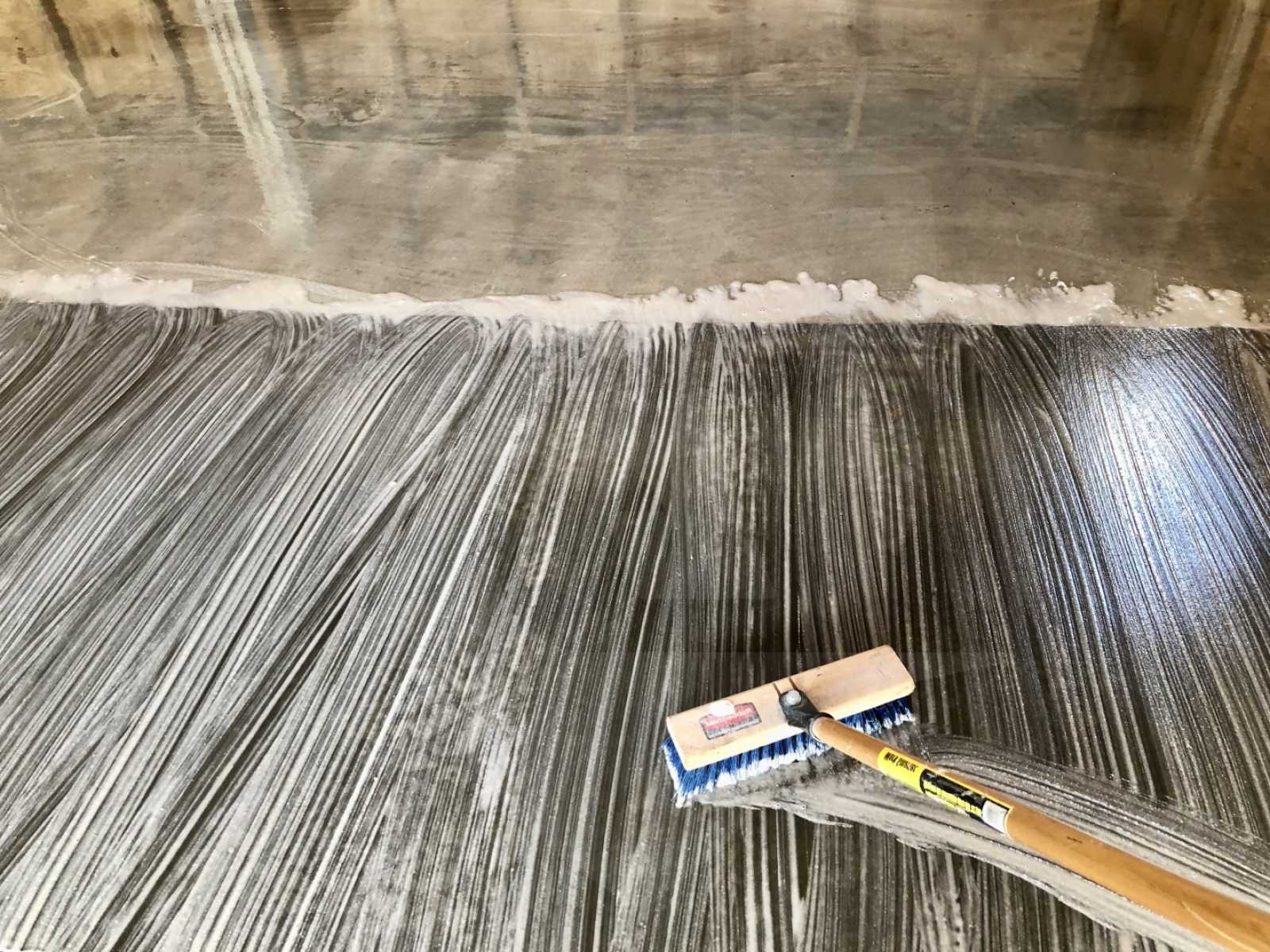When application instructions require a clean surface profile it refers to a concrete substrate free of dirt, dust, debris and other contaminates that can affect the adhesion and penetration of a sealer. Taking time to properly clean the concrete can make all the difference in regards to adhesion and penetration. Depending on how contaminated the surface is will depend on the amount of preparation. In some cases sweeping up the loose dirt and debris is sufficient. In other cases it is necessary to pressure wash or chemically etch (followed by neutralization) the surface in order to achieve a suitable surface profile. Any efflorescence, previous sealers and dyes should also be removed in most cases before resealing. Broom finished concrete is usually porous enough to accept a penetrating sealer while machine trowel substrates require additional etching to accept the sealer.
In order to properly prepare concrete to accept an epoxy or urethane mechanical scarification is usually required to result in a CSP level 2 or level 3. If concrete is not porous enough to accept a sealer, the sealer is unable to bond and adhere and thus results in decreased durability. As with all sealers, always read instructions and technical data sheets on surface preparation and proper application techniques.




